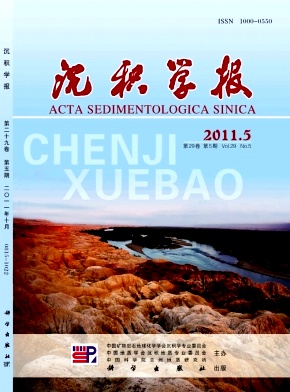The Holocene Climate Linkage between Low Latitude Area and North Atlantic:Case study on element and element ratios of Huguangyan Maar lake
- Received Date: 1900-01-01
- Rev Recd Date: 1900-01-01
- Publish Date: 2011-10-10
-
Key words:
- element intensity and element ratios
Abstract: Future environment evolution is a great composition of global change research. High resolution paleoenvironment study can help us to understand the rules of past global change and provides scientific basis for forecasting future environment evolution. As a special type of crater lake, maar lake has unique advantages in forming and conserving high resolution geological record. Elementary assemblages of the lake sediment are not only affected by depositional environment, but also linked to geochemical property of the element. There is not straightforward connection between most of the elements and the environment variation due to the complexity of depositional environment and various changes after deposition. The combination of element and element ratios can magnify the response to climate change, thus weaken the effect of disturbing factors. The Huguangyan maar lake (21°9′N, 110°17′E) is located 18 km southwest of Zhanjiang City, Guangdong province. In November, 2009, we sampled two parallel long cores using UWITEC platform and a piston corer in the western part of the Huguangyan maar lake where the water depth is 16.2m (N 21°08′38.28″, E 110°16′45.66″)
. The drill core for this study is 855 cm long. The core was split along the axle wire before elementary analysis, elementary analysis is carried by Xray fluorescence spectrometer at State Key Laboratory of Marine Geology of Tongji University, the measuring space is 1 cm. Age model is obtained through comparison with previous study. Fe/Mn ratios, Rb/Sr ratios, Sr intensities and 550℃ loss on ignition (LOI) are good indicators of environmental change: Fe/Mn ratios can reflect water depth variation due to different sensibilities toward oxidoreduction condition, Rb/Sr ratios can reflect weathering intensity within the drainage basin, 550℃ loss on ignition (LOI) is an indicator of lake productivity, thus reflect the climate indirectly. Through high resolution investigation of above indicators, we reconstructed Holocene paleoenvironment evolution history of the Huguangyan area, paleoenvironment revolution at Huguangyan area since 11 000 cal a BP can be divided into four stages: stage Ⅰ, 11 000~7 800 cal a BP, the climate was warm and wet; stage Ⅱ, 7 800~5 600 cal a BP, the climate became cold and dry rapidly; stage Ⅲ, 5 600~2 000 cal a BP, it was relative warm and wet, but not as warm as early Holocene; stage Ⅳ, 2 000 cal a BP as yet, the climate became dry gradually. The results show that early Holocene is the Holocene optimum, the climate became relatively dry since the mid Holocene. This pattern is consistent with pollen record also from Huguangyan maar lake and other records from low latitude area of the northern hemisphere, which indicates the global nature of the orbital forcing of the Holocene monsoon. There are affiliations and differences between cold events reflected by Huguangyan Maar lake sediment and North Atlantic icerafted debris, which suggests that climate shift at low latitude area has certain linkage with North Atlantic area. Low latitude processes, such as monsoon and ENSO, are influencing factors that affected Holocene evolution at Huguangyan area. Holocene paleoenvironment evolution at low latitude is the result of superposition of low latitude processes and high latitude processes, which makes the mechanism of climate change at low latitude area more complicated.
| Citation: | WU Xudong. The Holocene Climate Linkage between Low Latitude Area and North Atlantic:Case study on element and element ratios of Huguangyan Maar lake[J]. Acta Sedimentologica Sinica, 2011, 29(5): 926-934. |






 DownLoad:
DownLoad: